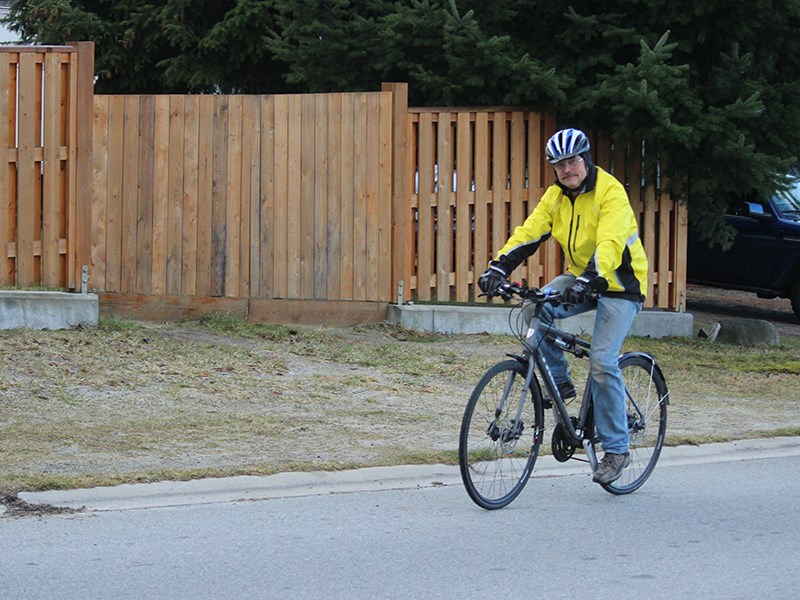City of Powell River has submitted a grant application to BikeBC in order to continue with its bike paths plan. The network of cycling paths in Powell River has been added to in phases since 2015.
City director of infrastructure Tor Birtig told committee of the whole on Tuesday, March 5, that over $1 million in project costs have been spent to complete the first four phases of Powell River’s cycling network to date.
When phase five is completed this year, it will connect Willingdon Beach and the surrounding trails into the existing network of bike lanes on Joyce Avenue.
Total project cost of approximately $462,000 for phase five will be shared by BikeBC paying 75 per cent of eligible expenses, and the city paying 25 per cent. The money would be drawn from the Community Works Fund, leaving the balance of the uncommitted funds in the account at approximately $363,735, according to Birtig.
For the first four bike path phases, financing was done on a 50/50 basis with BikeBC.
Phase one was approved in February 2015 for the Duncan Street/Manson Avenue corridor and cost the city $73,500. In September 2015, phase two, the Joyce Avenue/Complex Way connector, cost the city $177,441. Phase three connected South Manson Avenue for $87,500 in April 2016. In August 2017, the phase four Manson/Townsite connector cost the city $183,868.
While the majority of work on Powell River’s bike path system has been along the Manson corridor with a connection to Powell River Recreation Complex, there is no connection to Highway 101 (Marine Avenue), according to Birtig.
He said phase five will go from the recreation complex, down Harvie Avenue to Ann Avenue, then down Abbotsford Street to Willingdon Beach. Along Harvie and Ann, cyclists and motorists will share the roadway.
“Once we get to Abbotsford the bike lane will switch to the south side and it would be a dedicated bike lane that is marked out,” said Birtig. The cycling infrastructure should not affect existing parking, he added.
After completing phase four, parking became an issue along a short stretch of road shared by cyclists and vehicle drivers in Cranberry, where the marking of the bike lane on Manson Avenue has had a negative effect on business at Mitchell Brothers, according to its manager. Mayor Dave Formosa said he does not want a repeat of that.
“We could very well end up with a whole bunch of residents screaming at us,” said Formosa, “but at the same time I keep saying to people who get really angry with me over the bike lanes: environment, safety and health. I've always supported it based on that. But I do think we should have a sober thought after what we experienced and I'm still upset with. It's hurting Mitchell Brothers and we need to deal with that.”
Birtig said the most resource-intensive aspect to the project will be the section that follows Highway 101’s alignment.
“What we're proposing along that corridor is to widen the shoulder so we have room for parking,” he said. “There would be a travel lane, parking lane and then three metres of multi-use pathway.”
The report has been referred to the next sustainability committee prior to a decision made by council on the grant submission. Birtig said if council defeats the funding application, it can be pulled.



